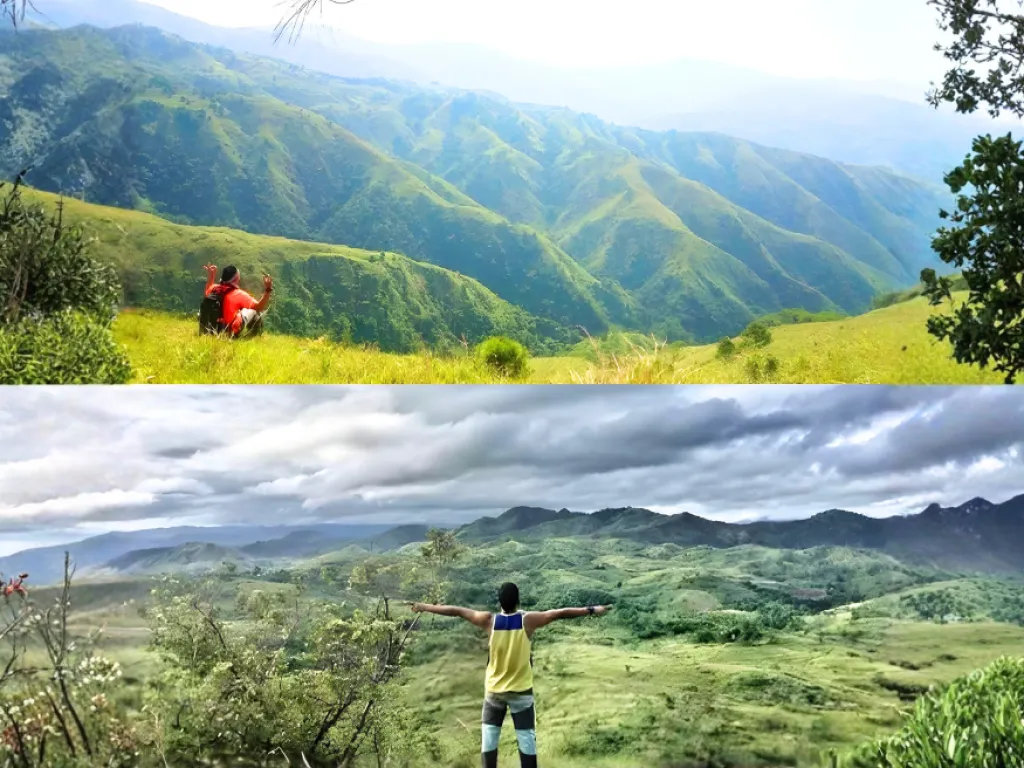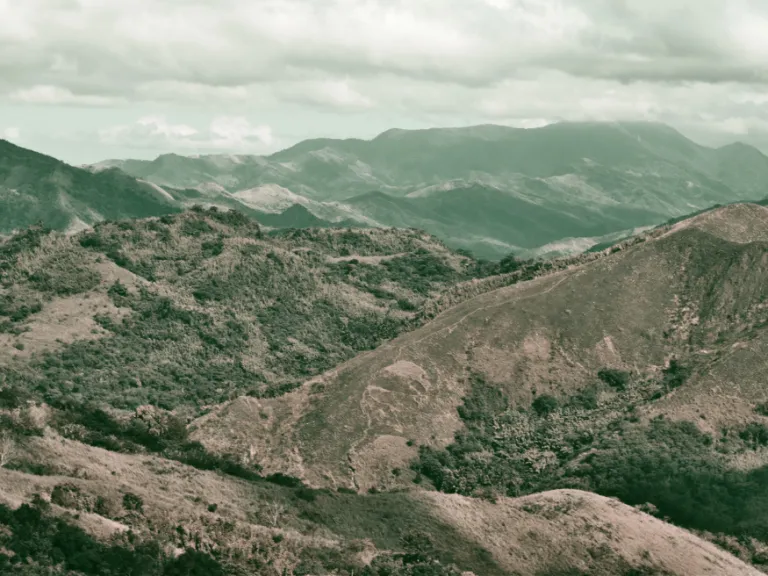Our favourite places to stay on this sleepy Cebu island.
What Makes Sierra Madre So Special?: Luzon’s Backbone and Shield From Typhoons

Most Filipinos first learned about Sierra Madre in school, then forgot about it, until the recent typhoons brought it back into focus. From Metro Manila, the mountain range became visible during pandemic lockdowns as the air cleared, and again during storms when people noticed how it shields the eastern provinces of Luzon.
The range stretches over 700 kilometers, earning the nickname “Backbone of Luzon.” Its highest peak rises 1,266 metres above sea level, roughly three times the height of the Petronas Towers. But there’s more to this mountain range than just numbers, it’s a lifeline for millions of Filipinos.
What does Sierra Madre really do?

Image credit: Mary Rose Relente | Unsplash
Sierra Madre is home to the largest remaining rainforest in the Philippines, covering about 40% of the country’s forest area. It shelters hundreds of species, including the Philippine eagle, golden-crowned flying fox, Philippine brown deer, and warty pig. It also houses the Agta-Dumagat-Remontado indigenous people, hunter-gatherers who have lived in these forests for thousands of years.
The mountain range feeds major rivers and watersheds that support rice fields and cities alike. The Palanan River, Abuan River, and Catalangan River drain into the Philippine Sea, while others flow into the Cagayan River system. These watersheds sustain agriculture in Central Luzon and Cagayan Valley and provide water for urban areas including Metro Manila.
How does it help during typhoons?
Many Filipinos praise Sierra Madre as a “natural shield” against storms, believing it weakens typhoons before they reach inland areas. In reality, studies show the mountain range does not significantly weaken typhoon winds. A 2023 study by the University of the Philippines found that tropical cyclones keep their strength while crossing Sierra Madre.
The mountains do, however, slow down storms, stretching out the rainfall and giving local authorities more time to warn communities and prepare evacuations. Sierra Madre also helps manage water flow and soil stability, which can reduce flooding and landslides in some areas.
Our beloved Sierra Madre is under threat

Image credit: Catherine Paredes | Canva Pro
Yes. Decades of logging, mining, road construction, and dam projects have destroyed large parts of the rainforest. The Kaliwa Dam, currently under construction, has drawn criticism from conservationists and indigenous communities because it will flood a protected area and displace local residents. Illegal logging has wiped out hundreds of thousands of hectares of forest, leaving slopes exposed to landslides.
Without these forests, the mountains lose the vegetation that slows water and protects the soil, making floods and landslides more likely when storms hit.
What happens if the forests disappear?
The loss of forest cover threatens more than wildlife. Indigenous communities could lose their homes and ancestral lands, farmers could face water shortages for irrigation, and millions of residents could face higher risks of flooding during typhoons. Sierra Madre’s resources are essential for both human and ecological survival.
How rich is Sierra Madre’s wildlife?
The northern Sierra Madre alone hosts over 100 species of amphibians and reptiles. About 70% are unique to the Philippines. The forests are also home to 201 mammal species and 556 bird species, many endangered or critically endangered. These animals rely on intact forest ecosystems, which are rapidly shrinking due to human activity.
Can you visit Sierra Madre?
Yes, but it’s a challenge. From Cavite, for example, reaching parts of the range like Malining, Umiray, or General Nakar can take an entire day by public transport. Trails are tough but doable for intermediate hikers. Travelers can expect remote paths, steep climbs, and breathtaking views. If you plan a sunset hike, you might need to camp or adjust your timing, as reaching viewpoints in one day can be difficult.
Visitors should also be aware of local regulations. Carrying hunting knives or similar weapons may not be allowed. Respect the land, the people, and the wildlife.
Also read: Mount Daraitan: Guide & Tips for Hikers
How can we protect Sierra Madre?

Image credit: Poguz.P | Canva Pro
Conservationists recommend:
Planting trees and restoring forests
Stopping illegal logging and destructive projects
Managing waste properly and reducing pollution
Supporting eco-friendly initiatives and government campaigns to preserve the forest
Sierra Madre may not weaken typhoons like some believe, but its rivers, slopes, and forests are vital for life in Luzon. Protecting it safeguards biodiversity, agriculture, and communities alike.
Featured mage credit: chaobidacse | Instagram
Published at
About Author
Wynona Purl
Subscribe our Newsletter
Get our weekly tips and travel news!
Recommended Articles
10 Bantayan Island Resorts, Hotels, and Rentals for Your Tropical Escape 10 Best Mountain Cafes in the Philippines for Your Peak Coffee Experience Coffee date on the mountains, anyone?
10 Best Things to Do in Los Angeles Los Angeles is more than Hollywood stars. From hikes with killer views to beaches straight out of a rom-com, here are 10 must-do LA experiences for Filipino travellers or any wanderers in general!
10 Commandments for Responsible Travel Flexing Spread the good word!
10 Creative Hangout Spots Around Metro Manila for Artsy Souls Looking for a place to meet fellow artists and thinkers? Here are 10 collaborative spaces in Metro Manila where creatives can hang out, brainstorm, and build ideas.
Latest Articles
Pangasinan Town Now Accepts Digital Payments in Markets and Transport No cash? No problem. Alcala, Pangasinan is officially in its digital era.
Pop Mart PH Opens Permanent Flagship Store in SM Megamall Labubu and Hirono have arrived! Check out holiday hours and event recaps here!
Chen of EXO Arcadia Concert Manila 2026: Tickets, Dates, and Perks Ticket info and fan perks
TLC Playpark: Free Christmas Destination in Taguig, Opening Hours, and Commute Guide Learn what to expect and how to get to TLC Playpark in Brgy. Lower Bicutan Taguig via C5 and MRT-3!
Free MRT and LRT Rides for LGBTQIA+ Members and Solo Parents Today Who rides free today

